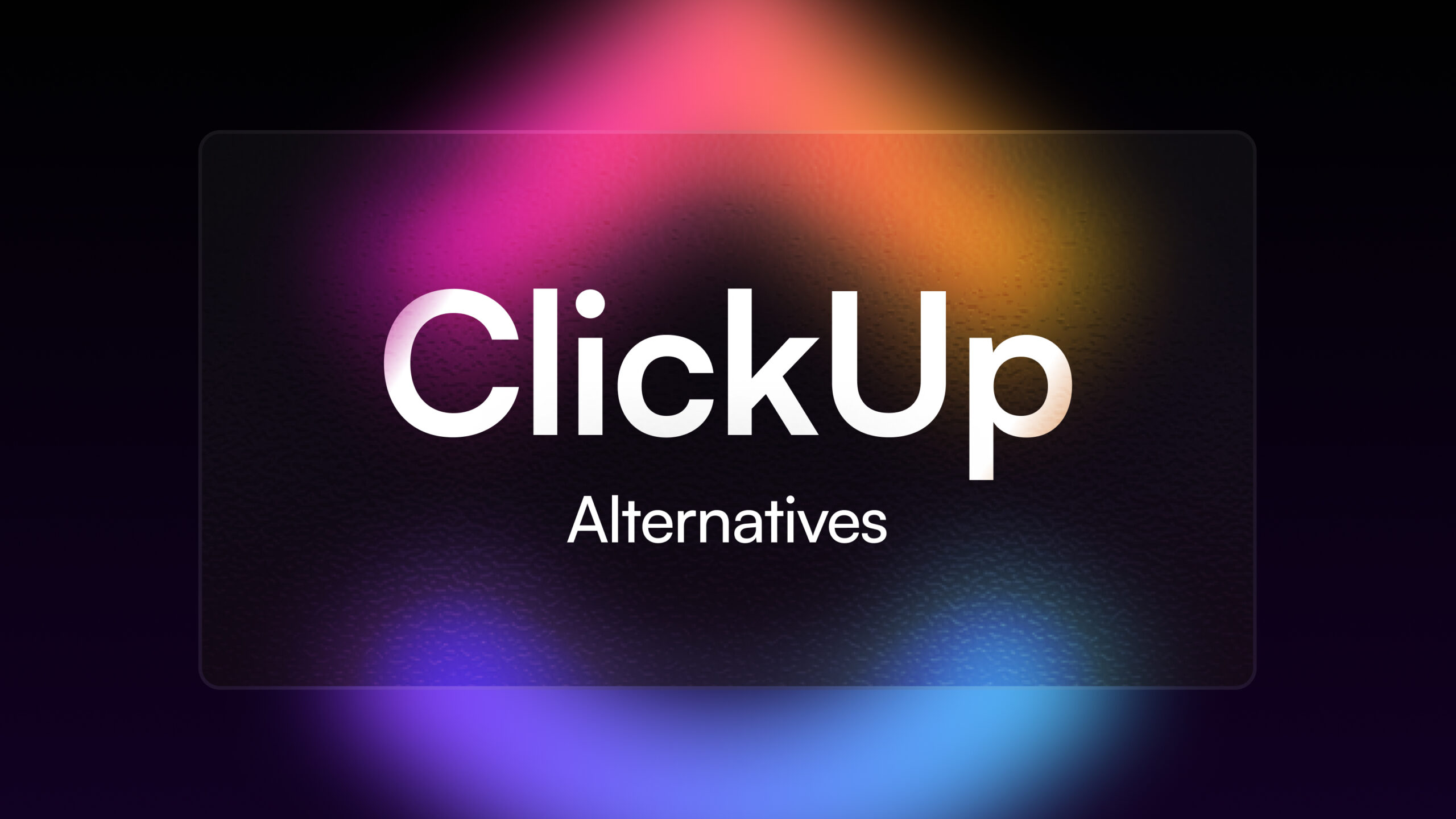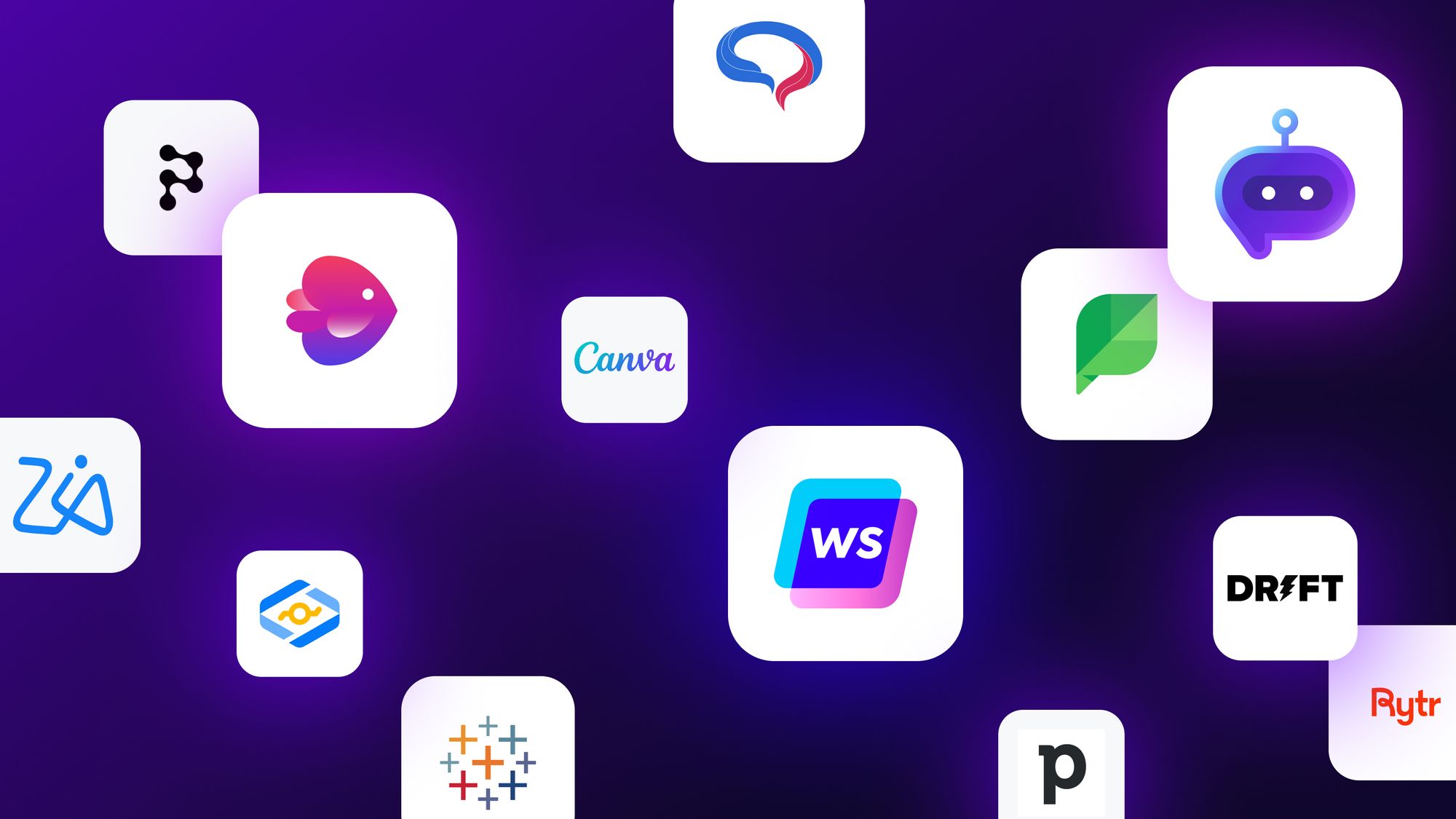At Writesonic, we’re constantly striving to make Chatsonic the best conversational AI tool on the market.
From SEO research to long-form content creation, Chatsonic is evolving into an AI marketing agent that mirrors the expertise of a seasoned marketing consultant.
But we also recognize that everyone’s needs are different. While Chatsonic provides an all-in-one solution for many users, some may prefer tools that focus on specific tasks or fit niche workflows.
That’s why we’ve put together this list of 8 Chatsonic alternatives to help you find the best tool for your unique requirements.
This comprehensive guide will explore each alternative’s strengths, features, and drawbacks, giving you all the information you need to make an informed choice.
But first, let’s take a closer look at what Chatsonic offers and why you might prefer this tool over alternatives.
What is Chatsonic?
Chatsonic is more than just your average chatbot.
This AI marketing agent is built to simplify and optimize end-to-end workflows for businesses, freelancers, and agencies.
By leveraging advanced AI models like GPT-4 and Claude and integrating real-time knowledge updates, Chatsonic is tailored for professionals looking for accuracy, speed, and versatility in their content and marketing efforts.
Chatsonic is especially built for high-volume content creators and marketers who need an edge in terms of SEO and creativity.
Unlike other chatbots, this intuitive platform integrates with tools like Google Search and Ahrefs to pull up the most relevant data, making its responses more contextually accurate.
Here are some standout features of Chatsonic:
→ Intuitive marketing mode: transforms Chatsonic into a one-stop solution for marketers by integrating SEO tools like Ahrefs, Google Search Console, and Answer the People for topic and keyword research, optimization, and link reading.
→ Brand voice customization: Input PDFs, external docs, links, or your own content guidelines so the AI agent can adapt to your brand voice or tonality.
→ Voice interaction: A hands-free way to interact with Chatsonic—perfect for multitaskers.
→ Real-time data: While many AI tools rely on historical information, Chatsonic incorporates real-time search capabilities, ensuring current and relevant responses.
→ AI image generation: Transform text into unique AI artwork using models like Stable Diffusion and DALL-E within the tool.
→ Chatsonic Chrome Extension: Extend AI capabilities seamlessly across the web, from email summaries to creating social posts directly from blogs.
→ Multilingual support: With over 30 languages, it’s perfect for global reach.
In short, Chatsonic addresses a common pain point: the need to juggle multiple platforms for different marketing tasks.
With its end-to-end approach, you can manage everything—analysis, creation, and publishing—within a single interface.
As an excellent ChatGPT alternative, Chatsonic understands and asks follow-up questions to ensure it always provides you with high-quality output.
Here’s what some of our users are saying about Chatsonic on software review platforms like G2:
“Chatsonic is the best AI content generator. It’s so creative if you use it for blogs or business, rewriting and summarizing everything.” –Luisa T. (Technical support specialist)
“Chatsonic is not like any other AI tool. It’s more humanized.”
“Chatsonic has increased my productivity. I’m using it to write the content, rephrase it, or generate a whole new idea for the content. It’s very easy to use. While using Chatgpt, I used to face problems like bad responses. But Chatsonic responses come very close to my liking. It has great customer support which guides you at every step.” –Yash C.
However, some users also mention one drawback of the tool.
With so many features and in-built tools, the interface can be overwhelming for some and may require an initial learning curve.
But with a few uses of the tool, users are able to navigate Chatsonic and use the tool with ease.
- G2 rating: 4.0/5
- Pricing: Starts at $16/month for individual plans. 25 credits for free through the free plan.
Also read: Best 10 Surfer SEO Alternatives for SEO & Content Teams
Chatsonic alternatives: A quick overview
Now that you’re familiar with Chatsonic, let’s look at the best alternatives we came across through a quick comparison table:
| Tool | Key features | Pricing |
| ChatGPT | • Advanced language model• Variety of plugin tools• Custom instructions | Free version, Plus at $20/month |
| Google Gemini | • Multimodal processing• Real-time data access• Advanced reasoning | Free (Basic), $19.99/month for Advanced. |
| Claude AI | • Long context window• Research capabilities• Strong document analysis | Basic plan for free. $20/month for Pro version. |
| Perplexity | • Real-time search• Academic research• Citation support | Free plan with limited features. Premium plan starts at $20/month. |
| 1min.AI | • Quick responses• Multiple AI models• Voice commands | $9.99/month |
| Text Cortex | • Content optimization• SEO focus• Multiple languages | $29/month |
| Github Copilot | • Code completion• Technical writing• Documentation help | 30-day free trial. Paid plan costs $10/month. |
| Meta Llama | • Open-source model• Customizable• Self-hosting options | Free (Open source) |
8 Chatsonic alternatives you should try
When assessing Chatsonic alternatives, we focused on several critical factors to ensure our recommendations cater to diverse needs. These include:
- Feature depth and functionality: How well the tool performs specific tasks like content creation, SEO, or coding.
- Ease of use: Whether the tool has a user-friendly interface and requires minimal onboarding.
- Cost-effectiveness: The value offered relative to its pricing and features.
- Specialization vs. versatility: Whether the tool offers focused solutions or a broad range of features for end-to-end workflows.
- Customer feedback and reviews: User sentiment on platforms like G2 and Capterra.
Our evaluation process included testing each platform with identical prompts to ensure fair comparisons. This helped us understand their strengths and limitations in various use cases.
Each review includes practical insights about performance, specific use cases, and potential limitations. This way, you can make an informed decision based on your unique requirements.
And always remember that the best Chatsonic alternative depends on your specific needs, budget, and intended use cases.
1. ChatGPT
Best for: Diverse use cases and conversational AI-generated results.
Overview:
ChatGPT, developed by OpenAI, is widely recognized for its ability to understand natural language and conversational abilities.
We’ve found it particularly impressive for its ability to handle complex writing tasks while maintaining natural, human-like responses.
It’s an excellent choice for those who need an AI tool to generate creative content and even assist with technical tasks like coding.
ChatGPT stands out for its deep learning capabilities through its “memory.” This means that the tool can understand context beyond conversations, so you don’t have to repeat information.
The tool is optimized for a wide range of applications, from casual chats to more complex query handling.
With its GPT-4o model, ChatGPT can generate highly accurate and context-aware responses, which makes it a popular choice for users who require detailed, coherent interactions.
Key features:
- Support various plug-in tools for enhanced usage.
- Integration with various platforms (Slack, Microsoft Teams, etc.)
- Strong contextual understanding of multi-turn conversations.
- API access for developers to integrate into custom workflows.
- Multi-lingual platform.
Pros:
- Highly versatile across different tasks (content creation, research, etc.)
- Can remember details between chats, allowing it to provide more relevant responses.
- Regularly updated with improved models (GPT-4o and beyond).
Cons:
- Daily capacity limits on free version.
- Usage limits of 40 messages every 3 hours.
- Cannot read external links.
- AI hallucinations affect the reliability of the content.
Pricing: Free version with limited access. ChatGPT Plus starts at $20/month for full access to GPT-4.
User rating and reviews: ChatGPT maintains a strong 4.7/5 rating on G2. We noticed particularly high scores for ease of use and quality of outputs.
The tool particularly shines in collaborative environments where multiple team members need to generate and refine content. Its ability to understand context and maintain conversation flow makes it an excellent choice for content creators who need ongoing support throughout their writing process.
You might also like: Claude vs. ChatGPT: A Detailed Comparison
2. Google Gemini
Best for: Advanced reasoning and handling complex tasks.
Overview:
Google Gemini, formerly known as Bard, is an advanced conversational AI within the Google ecosystem.
The tool is designed for those who need an AI tool that excels in search-based tasks, complex data analysis, and AI content generation.
It’s ideal for users who work in data-heavy industries or need precise, real-time information to power their projects.
We’re particularly impressed by its 90.0% score in Massive Multitask Language Understanding, surpassing human expert performance
Gemini’s strength lies in its ability to pull from a wide array of live data sources and generate contextually rich responses.
It’s highly suited for users who require AI that can offer up-to-date insights and seamless integration with Google’s ecosystem of tools.
Key features:
- Real-time access to live data for generating up-to-date content.
- Strong performance in data-heavy tasks (e.g., research, analytics).
- Excellent multimodal understanding for processing both text and image inputs.
- Strong integration with Google Workspace
Pros:
- Fast and accurate responses with up-to-date information.
- Integrates seamlessly with Google tools like Google Cloud, Docs, and Sheets.
- Powerful data analytics capabilities for enterprise-level applications.
Cons:
- Still evolving in terms of conversational abilities compared to competitors.
- Limited response to certain topics.
Pricing: Free version available through Google login. Advanced plan for $19.99/month.
User rating and reviews: With a 4.4/5 rating on G2, users highlight the sophisticated reasoning abilities for complex tasks. We also found it particularly effective at breaking down intricate subjects, especially in areas like mathematics.
3. Claude AI
Best for: Balancing speed and high performance for enterprises.
Overview:
Developed by Anthropic, Claude is a tool that implements constitutional AI principles, making it one of the few chatbots that prioritize safety while maintaining advanced capabilities.
With the introduction of Claude 3, the newest member of the AI model family, the tool has enhanced its reasoning and contextual capabilities for stronger and more accurate responses.
Claude AI offers four models, including Claude 3 Haiku, Claude 3 Sonnet, and Claude 3 Opus.
💡 P.S: Chatsonic also offers Claude 3.5 Sonnet!
Each AI model has varying performance capabilities, which helps users to have the right balance of intelligence, cost, and speed.
The tool excels at maintaining context over extended conversations and provides reliable outputs with minimal hallucination rates.
Claude offers a compelling mix of features and reliability for content creators and businesses seeking accuracy and safety in their AI interactions.
Key features:
- High level of accuracy in the responses.
- Excels in data processing tasks like knowledge retrieval, product recommendation, etc.
- Demonstrates human-like understanding.
Pros:
- Fast processing and better performance.
- Easy to use for diverse needs.
- Customizable to user preferences.
- Strong safety protocols.
Cons:
- Limited queries in the free version.
- Potential hallucinations.
Pricing: Free version provides 30 queries per day. Claude 3 Opus is for $20/month. Other plans available for enterprises.
User rating and reviews: With a 4.7/5 rating on G2, users praise Claude’s text processing and analysis tasks to be notably superior, especially when handling complex instructions. The tool also excels at maintaining context over extended conversations and provides reliable outputs with minimal hallucination rates.
4. Perplexity
Best for: Students, researchers, writers, and professionals looking for comprehensive answers.
Overview:
Perplexity AI is an excellent choice for users looking for an AI chatbot that is particularly strong in delivering evidence-backed responses.
The tool shows exactly where information comes from, making it ideal for research and fact-checking tasks.
Perplexity excels in highly detailed, contextually aware, and complex content generation, making it perfect for those who need AI that understands intricate language structures, handles technical topics, and creates well-researched long-form content.
Unlike some AI tools that focus on generating quick answers, Perplexity AI takes a more meticulous approach, making it perfect for users who value depth and accuracy.
Key features:
- Offers on-the-go access with voice search and multilingual support.
- High perplexity and burstiness for more nuanced responses.
- Can handle specific, niche topics with expertise.
- Summarizes active web pages and allows direct queries from the toolbar.
- Provides citations for all responses.
Pros:
- Highly accurate and contextual responses.
- Ideal for research-based content and technical writing.
- Ensures to come up with up-to-date information.
Cons:
- No API access.
- The free version has token limits.
- Limited features compared to other AI models.
Pricing: Free plan with limited features available. Premium plan starts at $20 per month or $200 per year.
User rating and review: With a 4.6/5 rating on G2, users highlight the versatility of the tool for content creation, coding, and research. The platform stands out with its focus on accuracy and transparency. However, many point out how the tool tends to forget context after a few responses.
Also read: Perplexity AI vs. ChatGPT: Which Is the Best Conversational AI Tool?
5. 1min.AI
Best for: Individuals and businesses seeking a comprehensive AI solution for multiple needs.
Overview:
1min.AI is a multi-purpose AI platform combining text, image, and audio capabilities in one tool.
This comprehensive AI platform combines multiple AI models, including ChatGPT, DALLE, and Whisper TTS, to deliver a wide range of content creation capabilities.
With built-in SEO tools such as keyword research and clustering, it caters to marketers aiming to optimize their content.
1min.AI also offers built-in image and video editing tools, plus an AI model dedicated to coding–making this tool the perfect multi-use chatbot platform.
Its integrated workflow design sets it apart, which allows users to perform tasks from idea generation to publishing without switching tools.
Key features:
- Chat with multiple AI models simultaneously.
- Content generation in 30+ languages.
- Voice command support.
- PDF analysis capabilities.
Pros:
- Extensive free trial with 260,000 credits.
- Multiple AI models in one platform.
- Strong image editing capabilities.
Cons:
- Some features require significant credits.
- Limited team collaboration options.
- Lacks fact-checking capabilities.
Pricing: Free version comes supports 450,000 credits. The pro version is available at $6.50, with 1,000,000 credits. Business plan is for $10.00, with 2,000,000 credits.
User rating and review: With a 4.6/5 rating on G2, user feedback is highlighted for its image generation and editing capabilities. Users appreciate its versatility for different use cases and affordability, though some note that the credit system can be a constraint for extensive use.
6. Text Cortex
Best for: Content creators, marketers, and businesses seeking an AI-driven writing assistant.
Overview:
Text Cortex AI is an intelligent writing assistant designed to boost productivity across multiple platforms.
It utilizes advanced AI to generate content ranging from blog posts to emails in over 25 languages.
We found it particularly impressive that the platform serves as an AI co-pilot across more than 2000 web domains, making it highly accessible for various content creation needs.
Text Cortex adapts to individual writing styles and integrates seamlessly with numerous applications, making it a versatile choice for content creation. Users can integrate the AI with their own data and knowledge base.
Key features:
- Rewriting toolkit with contextual rephrasing.
- Support for 25+ languages.
- Grammar and readability checking.
- 60+ AI writing templates.
- Browser extension with 30,000+ integrations for different apps and websites.
- Customizable AI personas.
Pros:
- User-friendly interface
- Extensive integration capabilities.
- Comprehensive template library.
- Strong grammar-checking capabilities.
- EU-compliant infrastructure.
Cons:
- Lacks fact-checking capabilities.
- Occasional repetitive content.
- Steep learning curve for writing style adaptation.
Pricing: Free version offers up to 10 creations per day with paid plans starting at $19.99 per month (billed annually), which includes unlimited creations and additional features.
User rating and review: TextCortex AI holds a rating of 4.8 out of 5 on G2. Users commend its versatility and user-friendly interface, though some mention a learning curve when exploring all features.
7. Github Copilot
Best for: AI-assisted code generation and technical writing
Overview:
GitHub Copilot, developed by GitHub in collaboration with OpenAI, is an AI-powered code completion tool.
The platform excels at generating code snippets and providing context-aware suggestions.
We love how Github Copilot maintains impressive accuracy in code completion tasks, with a particularly strong performance in Python, JavaScript, TypeScript, Ruby, Go, C#, and C++23.
This tool leverages the OpenAI Codex model, trained on a vast array of public code repositories, to provide context-aware code suggestions directly within the integrated development environment (IDE).
Whether you’re debugging, refactoring, or starting from scratch, this Chatsonic alternative is perfect for the coding journey.
Key features:
- Real-time code suggestions and completions
- Supports a wide range of programming languages, including Python, JavaScript, TypeScript, Ruby, and Go.
- Advanced code explanation capabilities
- Built-in security and compliance features.
Pros:
- Helps developers learn new languages and frameworks.
- Quick code generation.
- Strong documentation support.
- Regular feature updates.
Cons:
- Occasional inaccurate suggestions.
- Steep learning curve is involved.
- Limited to coding contexts.
- Requires technical knowledge.
- Learning curve for understanding and devising prompts.
Pricing: Available for free with limited features. Paid plans start at $4 per user/month. Additional add-ons are also available.
User rating and review: With a 4.4/5 rating on G2, GitHub Copilot is praised for significantly boosting productivity by providing intelligent code suggestions and auto-completion within the IDE. However, it sometimes provides inaccurate or irrelevant code suggestions.
8. Meta Llama
Best for: Developers, researchers, and businesses seeking a powerful, open-source large language model (LLM) for advanced AI applications.
Overview:
Meta Llama is a series of advanced open-source LLMs developed by Meta Platforms, designed to democratize AI access and foster innovation.
The latest iteration, Llama 3.1, boasts 405 billion parameters, delivering exceptional performance in natural language understanding, generation, and complex tasks like coding and mathematical problem-solving.
What sets Llama apart is its efficiency and adaptability.
We’ve found it particularly effective for technical texts and specialized content generation.
The model’s ability to avoid common AI traps and maintain logical consistency in exchanges makes it especially valuable.
Meta Llama’s open-source nature allows for extensive customization, making it a versatile choice for various AI-driven applications.
Key features:
- Multiple model sizes (8B, 70B, 405B parameters).
- Trained on over 15 trillion tokens.
- Support for 8 languages with 128K context length.
- Advanced coding and reasoning capabilities.
- Incorporates safeguards to minimize harmful outputs,
- Open-source architecture for customization.
Pros:
- Open-source flexibility.
- Strong performance metrics.
- Lower resource requirements, meaning reduced financial barriers associated with deploying advanced AI models.
- Extensive customization options
- Regular updates and improvements
Cons:
- Requires technical expertise.
- Complex deployment process.
- Limited direct support.
- Limited multimodal support for image processing and other capabilities.
Pricing: Meta Llama models are open-source and free to use for both research and commercial purposes, aligning with Meta’s commitment to democratizing AI access.
User rating and review: While specific user ratings may vary, Llama 3.1 has been lauded for its performance and accessibility. Users appreciate its open-source availability but highlight concerns about resource requirements and potential safety risks.
Why you should try Chatsonic
While comparing various AI assistants, we’ve found that Chatsonic offers several compelling advantages that make it worth considering.
Our testing shows it’s particularly strong in generating factual, real-time content that keeps up with current trends.
The platform’s integration with key SEO tools and Google Search sets it apart from many alternatives we’ve discussed.
Most importantly, Chatsonic ensures outputs are always based on the latest facts.
This addresses a common limitation we’ve seen in other AI tools that rely on older training data.
Here’s why Chatsonic should be your go-to tool:
1. An all-in-one marketing solution
Most marketers rely on a patchwork of platforms to manage tasks like keyword research, content creation, social media management, and email marketing.
Chatsonic consolidates these workflows into a single intuitive platform, empowering you to seamlessly move from analysis to creation to publishing.
With real-time results from Ahrefs and Google Search, you can easily get data-driven insights for SEO.
2. Tailored for diverse marketing personas
Chatsonic addresses the unique needs of its users with precision.
Whether you’re a solopreneur, freelancer, in-house marketer, or agency, it’s built to match your proficiency level and optimize your output.
For example, if you’re writing a blog, Chatsonic’s Marketing Mode can provide a comprehensive and detailed keyword analysis that will help you determine which terms to include and which pages to compete with.
Whether you’re focused on content, SEO, email, or paid ads, Chatsonic adapts to your needs and grows with your ambitions.
If you’re looking for a tool that goes beyond automation and delivers the expertise of a marketing consultant, Chatsonic is the solution you’ve been waiting for.
The bottom line
After evaluating these eight Chatsonic alternatives, it’s clear that each tool offers unique strengths tailored to different use cases.
That said, Chatsonic stands out as a powerful all-in-one solution, particularly for marketers and content creators.
Its ability to combine SEO tools, real-time data integration, and AI-powered marketing workflows into a single platform makes it a go-to tool for professionals seeking a comprehensive experience.
When choosing the right tool, your specific needs should take center stage:
- Content creators may gravitate toward ChatGPT’s fluid natural language abilities, but Chatsonic’s Marketing Mode provides a specialized edge with tools like keyword research and content optimization.
- Developers will benefit from GitHub Copilot’s precision and specialized coding assistance.
- Researchers might prefer Perplexity for its trustworthy, citation-backed information.
- Enterprises could find value in TextCortex’s flexibility and integration options.
While no single platform fits every need, Chatsonic’s versatility, innovative features, and ongoing improvements position it as a leader in the space.
It’s also worth remembering that AI complements human expertise rather than replacing it.
The best results come from blending AI’s efficiency with human creativity and critical thinking.
While you’re testing these tools, try Chatsonic for free and see how it simplifies your workflow–all while consolidating the features you need into one powerful platform.




















![How to Outsource Content Writing: Essential Steps [+10 Best Platforms]](/wp-content/uploads/Outsourcing-Content-Writing.jpg)
![How to Use ChatGPT for SEO: 10+ Strategies [Tips and Tricks]](/wp-content/uploads/4-1-1.png)











